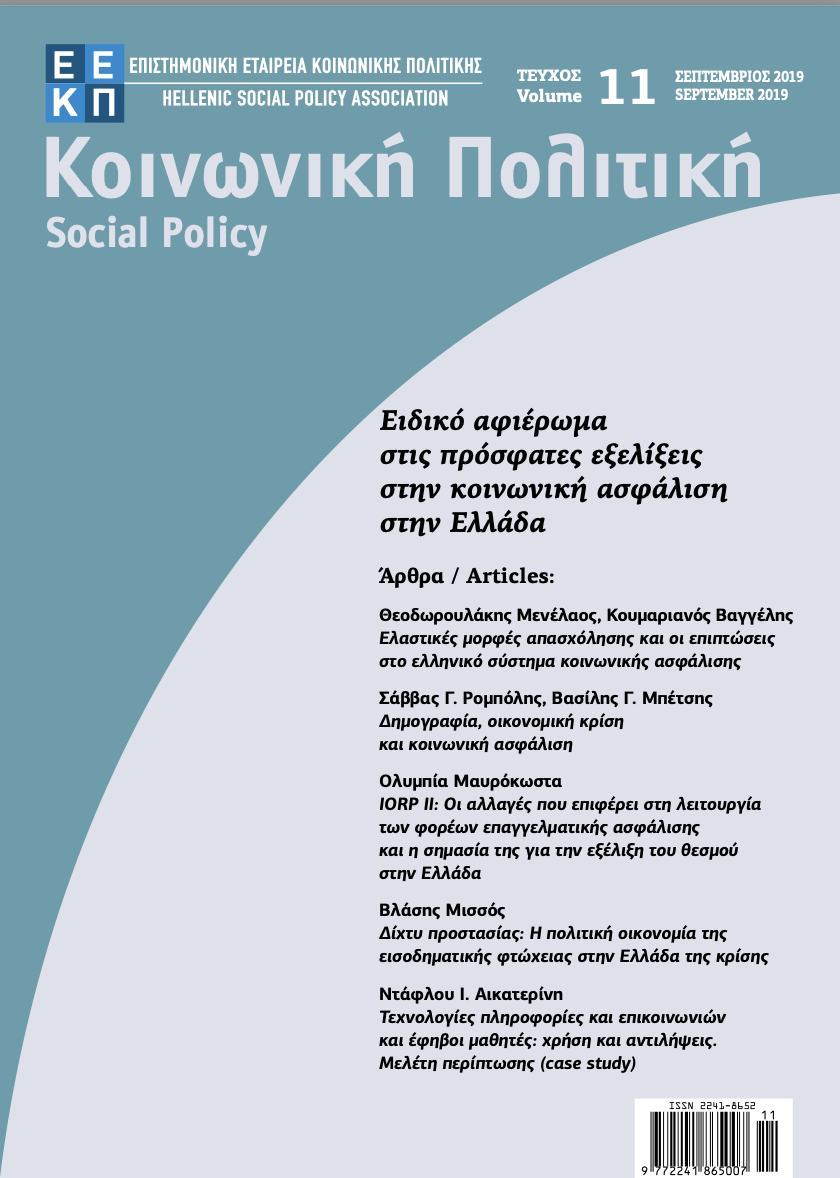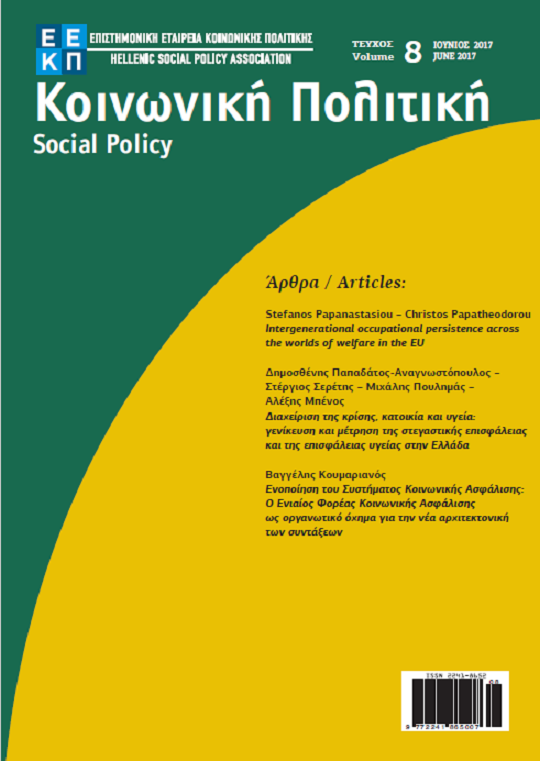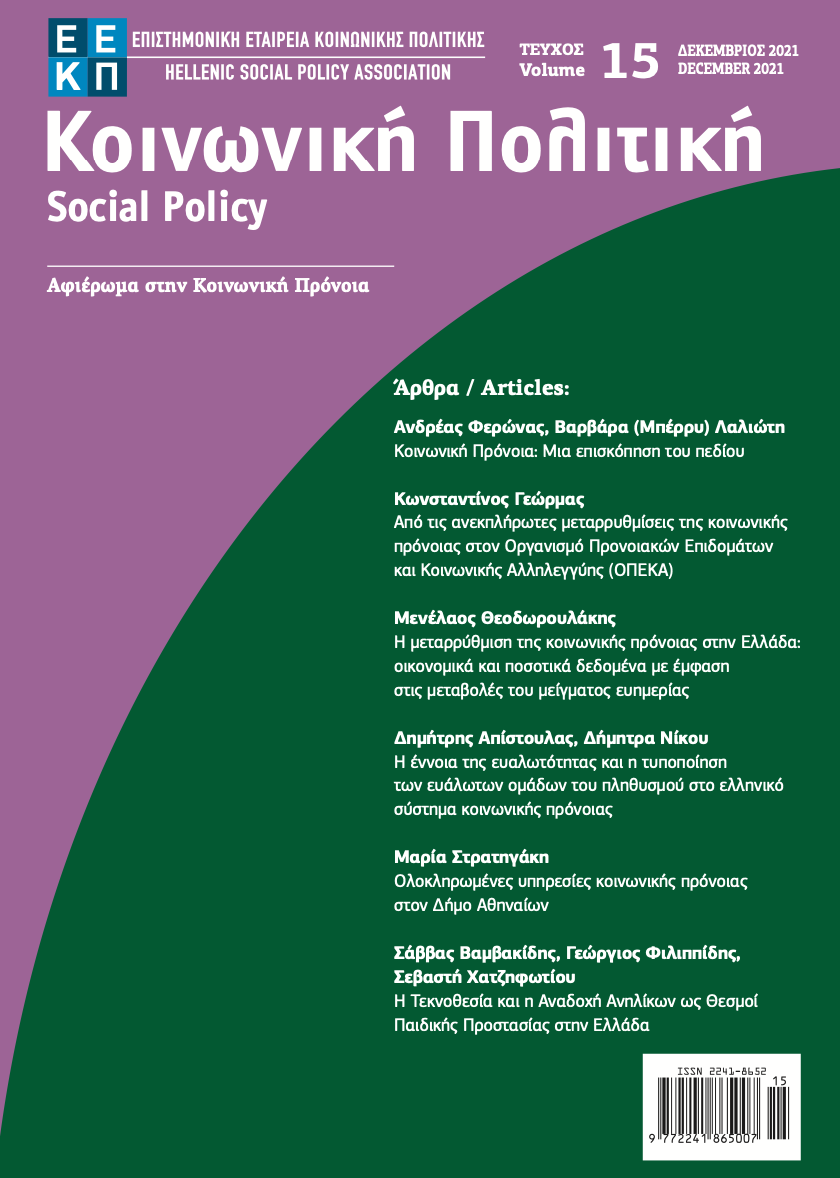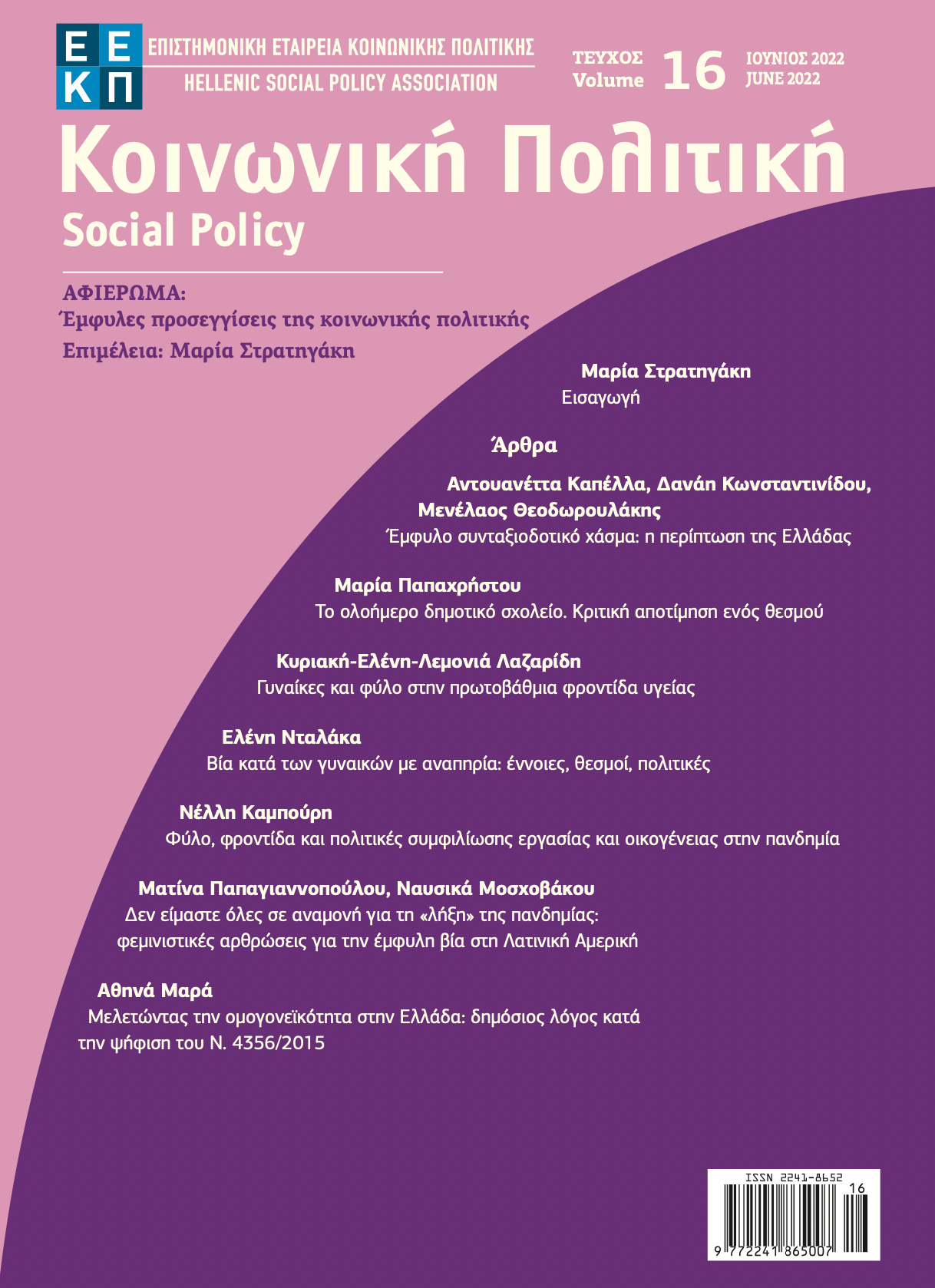Ελαστικές μορφές απασχόλησης και οι επιπτώσεις στο ελληνικό σύστημα κοινωνικής ασφάλισης
Résumé
Μια δεκαετία μετά την επίσημη εμφάνιση της δημοσιονομικής κρίσης η προσαρμογή της αγοράς εργασίας αλλά και η προσαρμογή του ελληνικού συστήματος κοινωνικής ασφάλισης στην πολι- τική της εσωτερικής υποτίμησης έχουν καταγραφεί διεξοδικά. Με εκκίνηση την παραδοχή ότι τα διανεμητικά Συστήματα Κοινωνικής Ασφάλισης εμφανίζουν μεγαλύτερη ευαισθησία σε σχέση με την κρίση της αγοράς εργασίας, το παρόν άρθρο επιχειρεί να εντοπίσει την αλληλεπίδραση μεταξύ των δύο κρίσεων και ειδικότερα τις πολυσήμαντες επιπτώσεις της διεύρυνσης των ελαστι- κών μορφών απασχόλησης στο ελληνικό σύστημα κοινωνικής ασφάλισης. Εντοπίζεται το εύρος της ενίσχυσης των ΕΜΑ αλλά και το αποτύπωμα της εξέλιξης αυτής στα έσοδα του συστήματος κοινωνικής ασφάλισης, όπως και στα κοινωνικοασφαλιστικά δικαιώματα των εργαζόμενων σε ΕΜΑ. H ανωτέρω προβληματική αναλύεται αξιοποιώντας μία ανεπαρκώς αξιοποιημένη βάση δεδομένων, αυτή των Μηνιαίων Στοιχείων Απασχόλησης του ΕΦΚΑ. Έχοντας αποτιμήσει την επενέργεια της ανάπτυξης των ελαστικών μορφών εργασίας στην κοινωνική ασφάλιση, θα ανα-φερθούμε σε ορισμένες σημαντικές μορφές προσαρμογής του ελληνικού ΣΚΑ στην εξάπλωση του νέου εργασιακού μοντέλου και τα περιορισμένα τους αποτελέσματα.
Article Details
- Comment citer
-
Θεοδωρουλάκης Μ., & Κουμαριανός Β. (2021). Ελαστικές μορφές απασχόλησης και οι επιπτώσεις στο ελληνικό σύστημα κοινωνικής ασφάλισης. Κοινωνική Πολιτική, 11, 7–36. https://doi.org/10.12681/sp.29019
- Numéro
- Vol. 11 (2019)
- Rubrique
- Άρθρα

Ce travail est disponible sous la licence Creative Commons Attribution 4.0 International .
Οι συγγραφείς των άρθρων που δημοσιεύονται στο περιοδικό διατηρούν τα δικαιώματα πνευματικής ιδιοκτησίας επί των άρθρων τους, δίνοντας στο περιοδικό το δικαίωμα της πρώτης δημοσίευσης. Άρθρα που δημοσιεύονται στο περιοδικό διατίθενται με άδεια Creative Commons 4.0 και σύμφωνα με την άδεια μπορούν να χρησιμοποιούνται ελεύθερα, με αναφορά στο/στη συγγραφέα και στην πρώτη δημοσίευση για μη κερδοσκοπικούς σκοπούς και με δικαίωμα τροποποίησης μόνον με παρόμοια διανομή (αν αναμείξετε, τροποποιήσετε, ή δημιουργήσετε πάνω στο υλικό, πρέπει να διανείμετε τις δικές σας συνεισφορές υπό την ίδια άδεια όπως και το πρωτότυπο).






